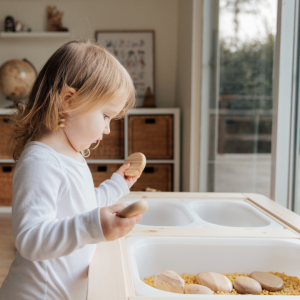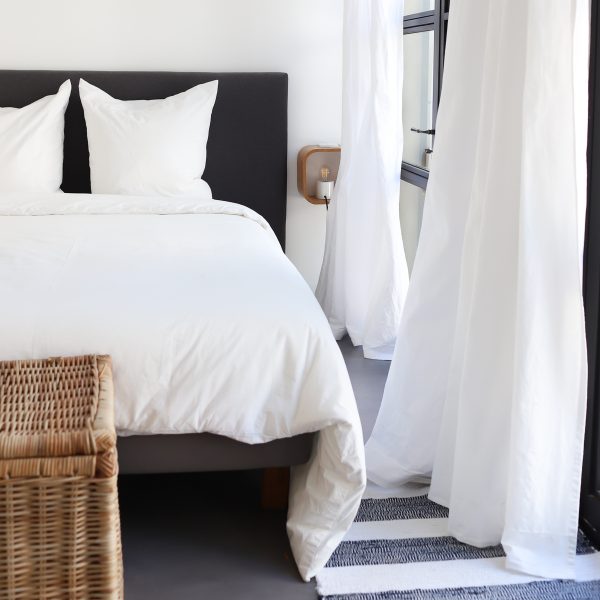
About 50% of children have stopped napping by age 4 year old, and 70% by age 5. When napping has stopped it is still important to have down time and quiet time each day for a child to unwind. Why is this important? Because for younger children memories are consolidated during naps and for older children and adults our memories are strengthened during periods of rest while we are awake (Tambini, Arielle et al., 2010).
Quiet time is not only important for your child, but for you as well. Quiet time gives the whole family a chance to slow down, embrace stillness, and develop mindfulness. It also helps everyone “reset” for the rest of the day.
For today’s blog, I interviewed Krysta Soloman who is the owner of Soothed Sensory. We talked about how to introduce your child to new activities such as a sensory bin and how this can be a helpful tool during quiet time for your preschooler and school age child (for ages 3 and up only, parent supervision required especially when starting this activity).
Interview with Soothed Sensory
Q: Tell me about yourself and what prompted you to start Soothed Sensory?
A: My name is Krysta Solomon. I am a wife, mama to a beautiful, intelligent 3 year old girl Harper Lee. I am a former nanny and preschool teacher. In both my nanny & preschool experience, I have learned a lot about the benefits of sensory play. It was strongly encouraged in everyday play! When I had my daughter back in 2018, I always knew that I wanted to expand her love for sensory play. When she turned 3 I began creating themed bins for her to explore. She is a very active 3 year old – when she played with these bins, she sits, explores and engages. Which is what every parent wants to see. She has fun and learns new skills at the same time and that feels like a parenting win that I wanted to share with others. Lastly, I noticed parents, during the height of the pandemic, struggling to keep their toddlers emotionally and educationally entertained at home. As a work from home parent, I felt this in my heart. I wanted to provide a one stop bin to help both kids and parents.
Q: What ages are your products geared towards?
A: Soothed Sensory Bins are great for ages kids ages 3 and up! There is no true age limit, as sensory activities are great for even older children.
Q: For children that have never used a sensory bin before how do you recommend introducing one?
A: Children either like or dislike sensory activities. Some children stray away from unknown textures or materials. It is important to first talk to them about what materials are in the bin and discuss what they may feel like when touched. Also, let children explore at their own pace. Definitely be there to facilitate, but overall the goal is for the child(children) to learn and explore through their own tactile experience.
Q: How do sensory bins aid in childhood development?

A: Sensory bins are great for children with and without sensory processing disorders. They facilitate learning through play, which I am a huge supporter of. Children are natural explorers and when we encourage this we are guaranteed to see results. Sensory bins are filled with materials that encourage communication about textures, colors, feelings, counting, letters and so much more. For example, when playing with our Alphabet Soup Bin, my daughter and I talk about each letter, the sounds they make and talk about words that begin with each letters. But, it is not just that! It’s also the communication about the colors of the letters, we sort them and even create patterns and she’s only three. Lastly, in this bin, there is rice as the sensory textile. When playing with the rice we pour from cup to cup, pick up using tongs, further enhancing fine motor skills and we even talk about what the rice feels like. Honestly, the learning is endless with one single bin!

Q: How often should you rotate/introduce a new bin?
A: I’d say you can get a good experience with a box over a 3-4 month span. After this, the excitement for a new bin and materials should blossom!

References:
- Tambini, Arielle et al.Neuron, Volume 65, Issue 2, 280 – 290. Enhanced Brain Correlations during Rest Are Related to Memory for Recent Experiences.


